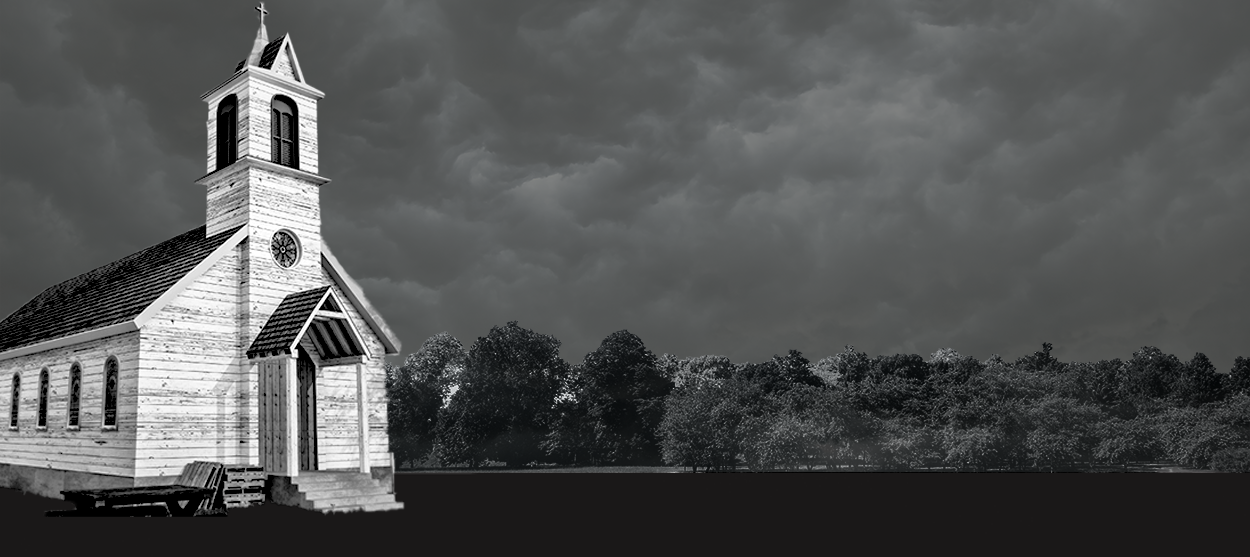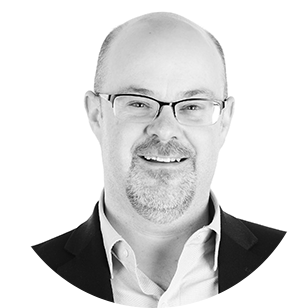The turbulent ride of post-church America
Why church attendance has plunged in the United States and what it says about the future


In recent years, I've often caught myself wondering whether the United States is suffering a nervous breakdown.
In the two decades since 9/11, Americans have invaded and deposed the governments of three countries, dropped bombs on and deployed American troops to many more, elected a series of presidents who promised (and often delivered) diametric reversals of their predecessors on a range of domestic and foreign policies, elevated a know-nothing carnival barker to the White House, seen a "woke" moral revolution roil leading cultural institutions, and witnessed an insurrection at the U.S. Capitol that marked the first non-peaceful transfer of presidential power in the country's history.
But it's one thing to notice a trend, quite another to explain it. Why does America seem increasingly unstable, prone to acting out in impulsive ways, lurching from one reaction to the next, driving itself mad?
The Week
Escape your echo chamber. Get the facts behind the news, plus analysis from multiple perspectives.

Sign up for The Week's Free Newsletters
From our morning news briefing to a weekly Good News Newsletter, get the best of The Week delivered directly to your inbox.
From our morning news briefing to a weekly Good News Newsletter, get the best of The Week delivered directly to your inbox.
On Monday, Gallup offered one way of understanding and explaining some of the head-spinning events of the past two decades.
From the 1930s through the 1990s, roughly 70 percent of Americans maintained membership in a church, synagogue, or mosque. But beginning around 2000, that number began to fall off a cliff. By the middle of the 2000s, it had dropped to 64 percent. By the end of the decade, it was 61. Today, a little more than twenty years since the downward trend began, the percentage of Americans who say they are members of an institution of religious worship has dropped all the way down to 47 percent — a collapse of 23 percentage points (from more than two thirds to less than half of the country) in the space of a single generation.
Grasping the meaning and significance of any sociocultural change as massive as this one is bound to be difficult — with numerous complicated effects, multiple prior causes, and all kinds of complex interactions among them. (Phenomena that appear to be effects of the drop in church membership might also be caused in part by whatever has produced the decline.)
Yet some preliminary observations are nonetheless possible — and they all point in the direction of continued and possibly accelerating turbulence in the American future.
A free daily email with the biggest news stories of the day – and the best features from TheWeek.com
There is, to begin with, the influence of the trend on Republican politics. I've argued for some time that Donald Trump was able to take over the GOP in part because of the multifaceted consequences of the religious right's weakness. On one level, Trump appealed to and exemplified a more secular form of conservatism than the one that dominated the party from Ronald Reagan through George W. Bush. He therefore appealed to and helped to conjure into existence a more fully post-religious right.
But on another level, Trump promised a more transactional and politically effective relationship with those members of the Republican coalition who remained committed to institutional Christianity. Unlike Bush, Trump didn't talk and act like an evangelical Protestant influenced by papal encyclicals. Instead, he offered himself up as a street-smart strongman protector for religious conservatives who felt more vulnerable than ever in a country rapidly moving away from all forms of institutional religion. As long as these conservatives paid their protection money in the form of unwavering support for the president, they would be repaid in the form of muscular judicial appointments and policy initiatives from the White House.
Yet the decline of church membership hasn't only had an impact on the GOP.
While the trend may point in the direction of increased agnosticism and outright atheism for some, for many others it has been and will continue to be an occasion to take spiritual experiences in new, unstable directions. Here two books, Ross Douthat's Bad Religion (2012) and Tara Isabella Burton's Strange Rites (2020), are useful guides. Both treat the decline of institutional religion as a given and claim that, far from producing a more secular America, it is inspiring forms of "heretical" religiosity unbound by the constraints of received traditions and institutions. The result is a proliferation of new sociocultural formations facilitated by the internet and the digital marketplace.
On the left, this could help to explain the quasi-religious character of the Great Awokening — the fervent devotion of so many young progressive activists to the cause of "social justice," which tends to involve the redrawing and policing of the bounds of morally acceptable thought and speech in institutions of civil society rather than the enacting of changes in public policy, as political activists have typically aimed to do. This crusading character of "cancel culture" links it in some respects to the style and preoccupations of the old mainline Protestant churches — and may make it their post-institutional successor. (Published just as the woke trend was getting underway, Joseph Bottum's An Anxious Age (2014) is quite insightful and prescient on the emergence of a left-wing spiritual descendant from the once-dominant Protestant establishment.)
On the right, free-floating spiritual energies obviously animate QAnon conspiracies and other apocalyptic scenarios about the country's present leadership, history, and future. These often-incendiary impulses mostly live online in a fantasy world where partisans get to cosplay revolutions, coups, and civil wars. But on Jan. 6, the country learned that fantasy can easily spill over into reality when real-world political leaders incite a level of anger too intense to be contained within the digital realm.
So much for possible consequences of the decline in church membership.
What about its cause? That's harder to answer. One possibility is that there's a feedback loop at work in which the association of religion with increasingly right-wing forms of Republican politics inspires some (younger and more left-leaning believers) to leave church behind, hastening a decline that began for other reasons. One wave of such defections may have taken place during the Bush administration, with another hitting more recently under Trump. This might explain why rates of church membership are falling faster among Democrats and liberals than among Republicans and conservatives.
But this doesn't explain as much as it seems. While church membership is declining faster on the left, and differs somewhat in speed from group to group, the downward trend is taking place across the board — among Republicans, Democrats, and independents; among liberals and conservatives; among whites, Blacks, and Hispanics; among the married and unmarried; among those with college degrees and those without.
For an explanation of that incredibly broad-based development, we need to look for an answer in how a longer-term cultural trend that emerged in two waves during the 1960s and 1980s has interacted with and been intensified by digital communications, and especially social media, since the start of the millennium.
That underling trend is the rise of an antinomian form of individualism that seeks liberation from any and all institutional constraints. Alexis de Tocqueville first detected its presence in the American soul nearly 200 years ago, but as its most penetrating analysts and critics have noticed over the past half-century, it attained unprecedented prominence in the U.S. and across the democratic world for the first time during the 1960s. Technological innovations of the more recent past have now empowered it to a truly unprecedented extent.
Americans still have higher rates of church membership than most of our peer countries. But the downward trajectory is steep, so that may not be true for very long. Precisely what the journey will be like and what will await us when we hit bottom is difficult to say. But I'd be willing to bet it's going to be a very rough ride.
Damon Linker is a senior correspondent at TheWeek.com. He is also a former contributing editor at The New Republic and the author of The Theocons and The Religious Test.
-
 Political cartoons for January 4
Political cartoons for January 4Cartoons Sunday's political cartoons include a resolution to learn a new language, and new names in Hades and on battleships
-
 The ultimate films of 2025 by genre
The ultimate films of 2025 by genreThe Week Recommends From comedies to thrillers, documentaries to animations, 2025 featured some unforgettable film moments
-
 Political cartoons for January 3
Political cartoons for January 3Cartoons Saturday's political cartoons include citizen journalists, self-reflective AI, and Donald Trump's transparency
-
 Bari Weiss’ ‘60 Minutes’ scandal is about more than one report
Bari Weiss’ ‘60 Minutes’ scandal is about more than one reportIN THE SPOTLIGHT By blocking an approved segment on a controversial prison holding US deportees in El Salvador, the editor-in-chief of CBS News has become the main story
-
 Has Zohran Mamdani shown the Democrats how to win again?
Has Zohran Mamdani shown the Democrats how to win again?Today’s Big Question New York City mayoral election touted as victory for left-wing populists but moderate centrist wins elsewhere present more complex path for Democratic Party
-
 Millions turn out for anti-Trump ‘No Kings’ rallies
Millions turn out for anti-Trump ‘No Kings’ ralliesSpeed Read An estimated 7 million people participated, 2 million more than at the first ‘No Kings’ protest in June
-
 Ghislaine Maxwell: angling for a Trump pardon
Ghislaine Maxwell: angling for a Trump pardonTalking Point Convicted sex trafficker's testimony could shed new light on president's links to Jeffrey Epstein
-
 The last words and final moments of 40 presidents
The last words and final moments of 40 presidentsThe Explainer Some are eloquent quotes worthy of the holders of the highest office in the nation, and others... aren't
-
 The JFK files: the truth at last?
The JFK files: the truth at last?In The Spotlight More than 64,000 previously classified documents relating the 1963 assassination of John F. Kennedy have been released by the Trump administration
-
 'Seriously, not literally': how should the world take Donald Trump?
'Seriously, not literally': how should the world take Donald Trump?Today's big question White House rhetoric and reality look likely to become increasingly blurred
-
 Will Trump's 'madman' strategy pay off?
Will Trump's 'madman' strategy pay off?Today's Big Question Incoming US president likes to seem unpredictable but, this time round, world leaders could be wise to his playbook
